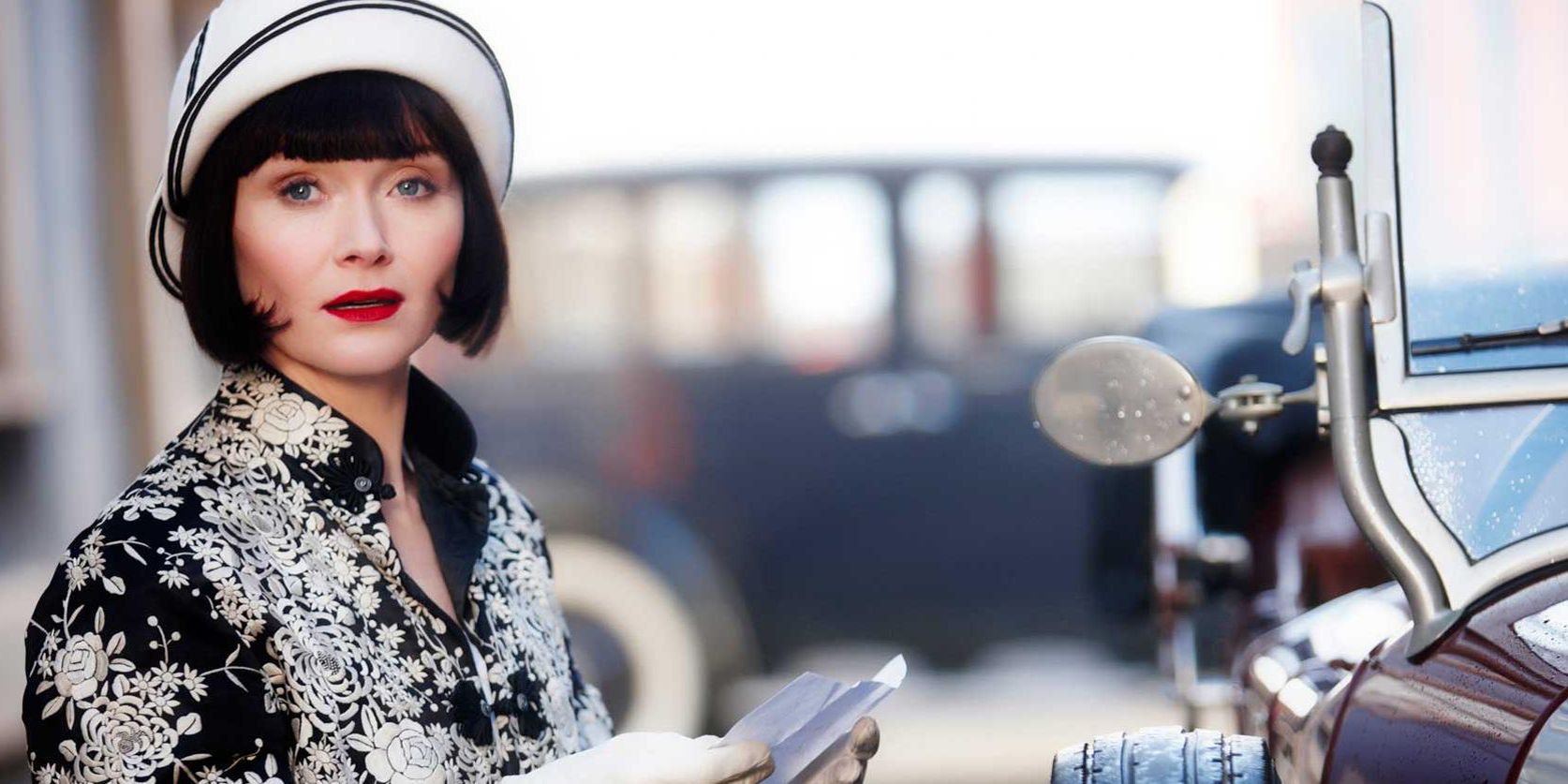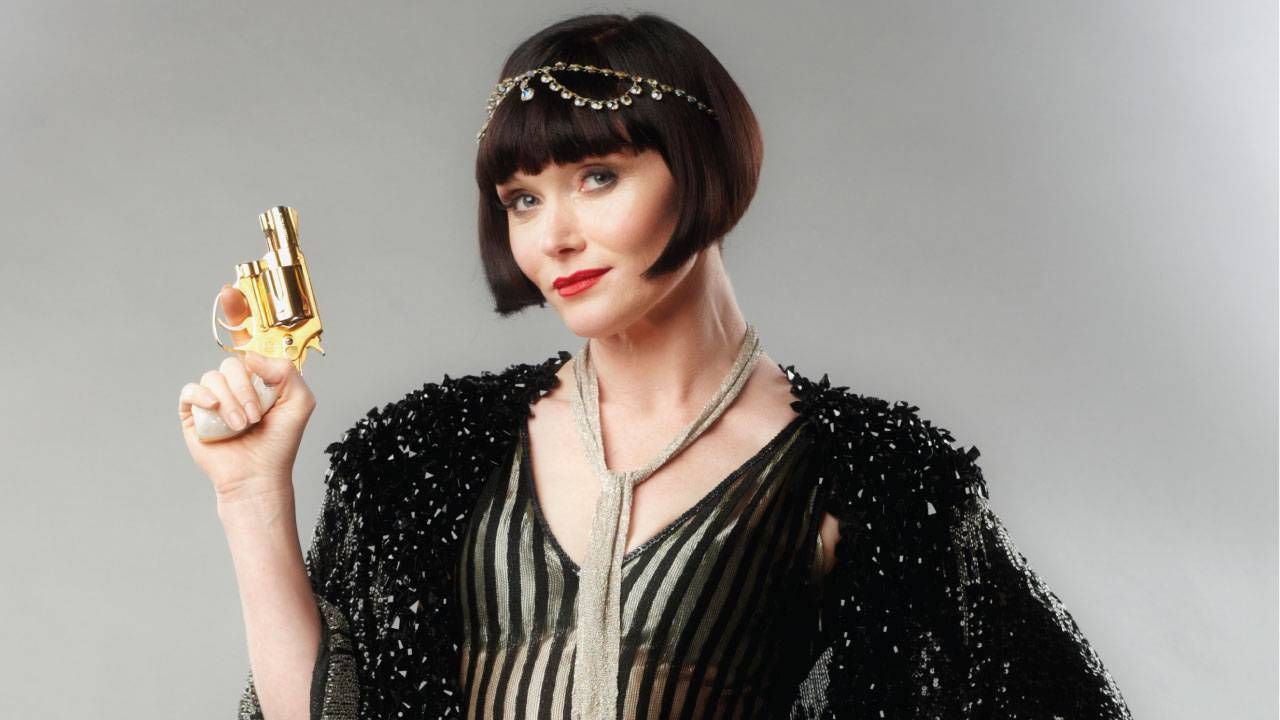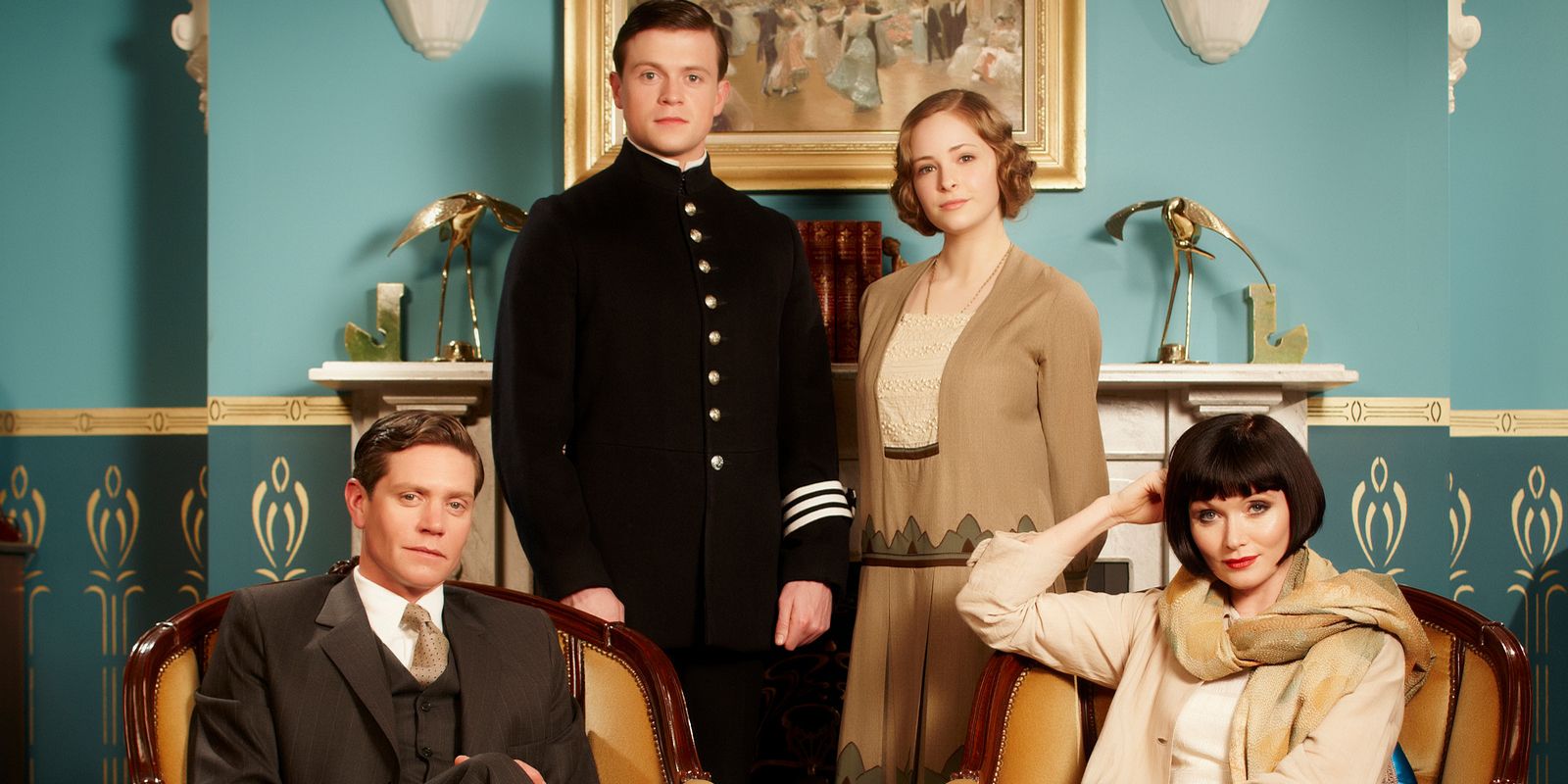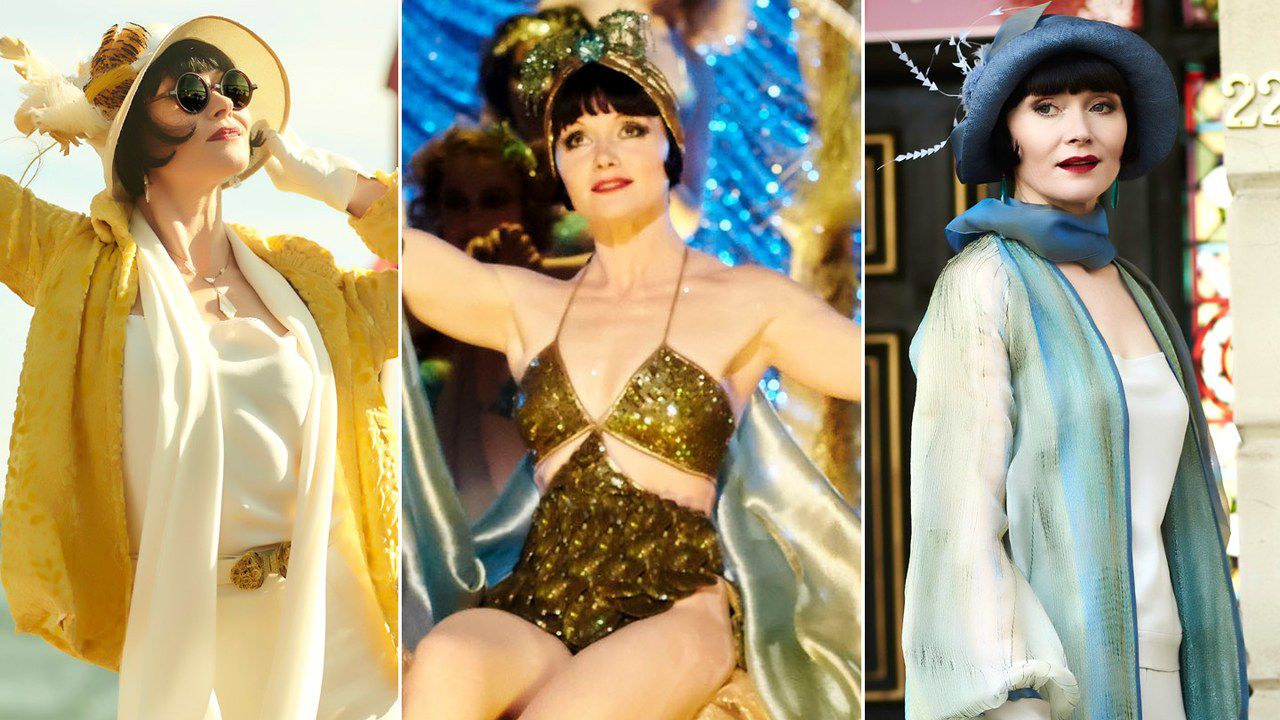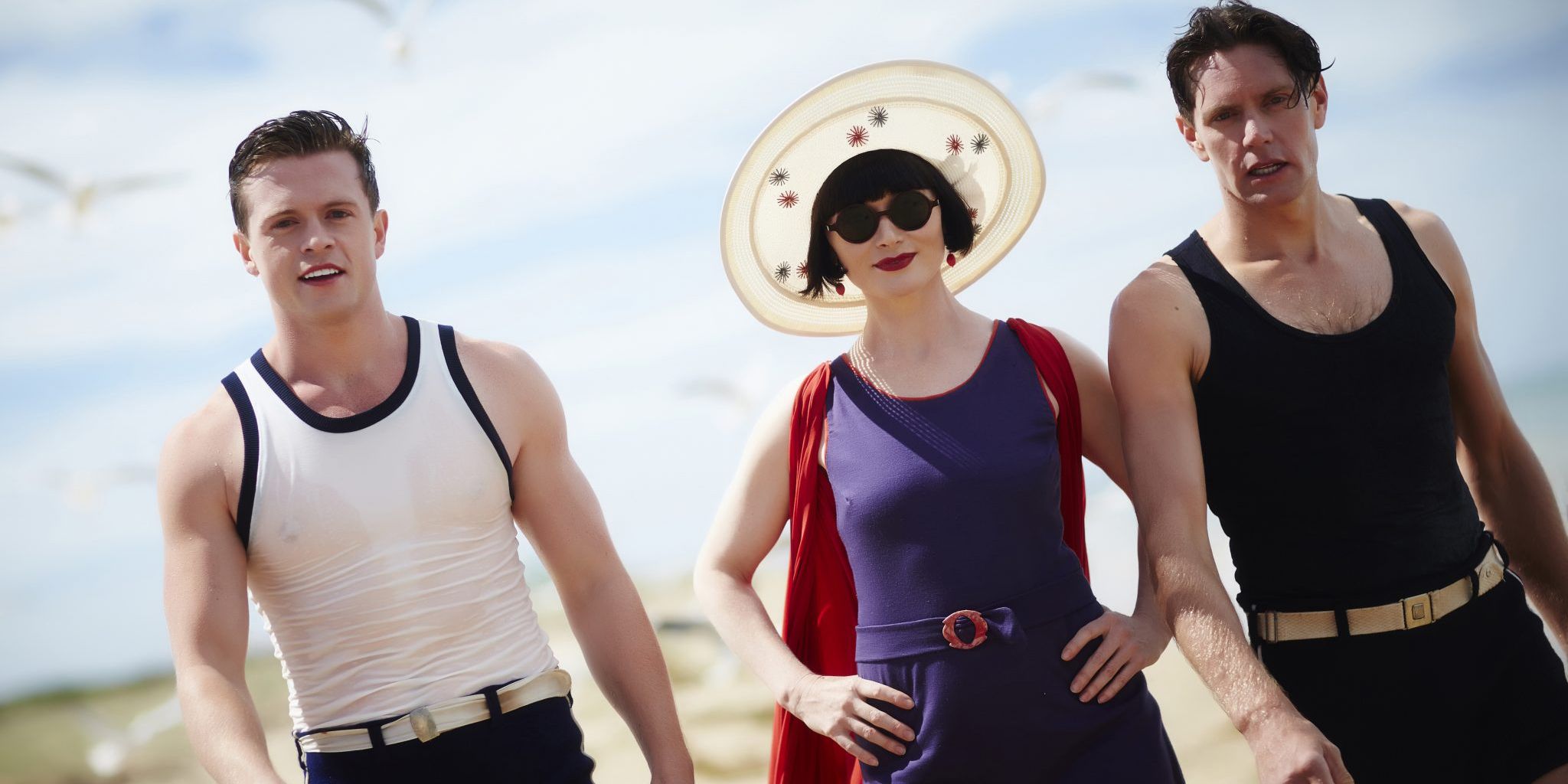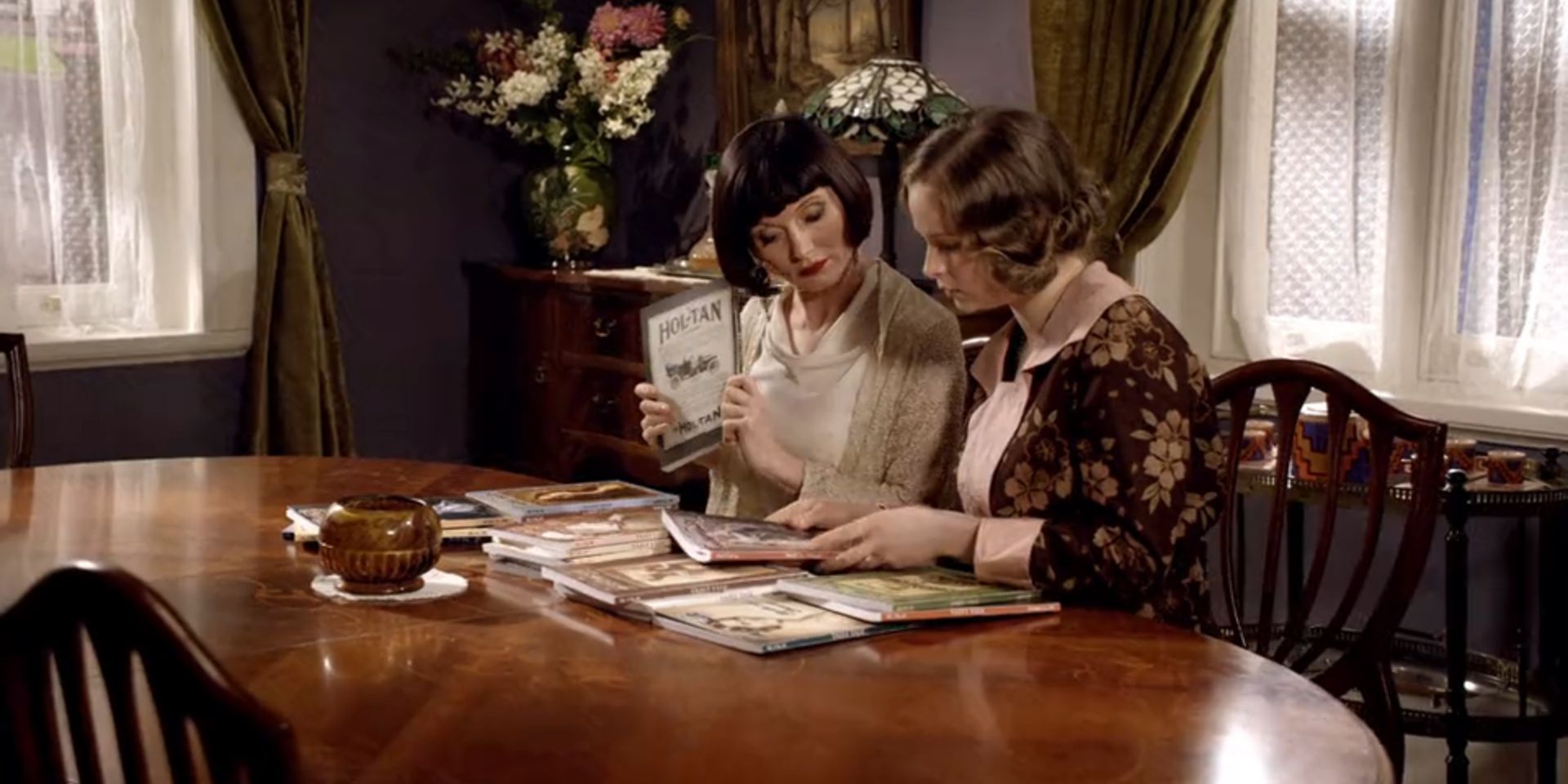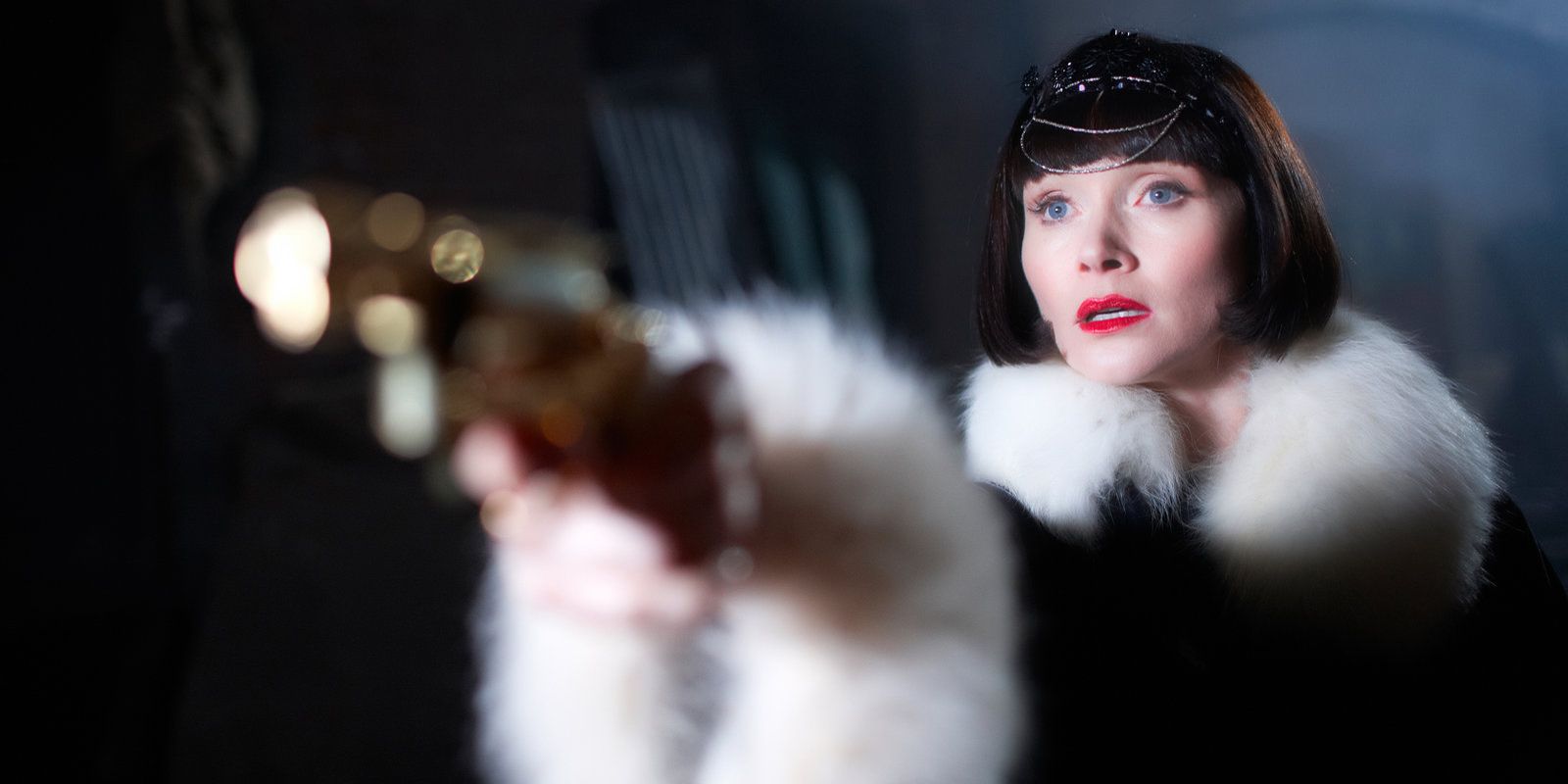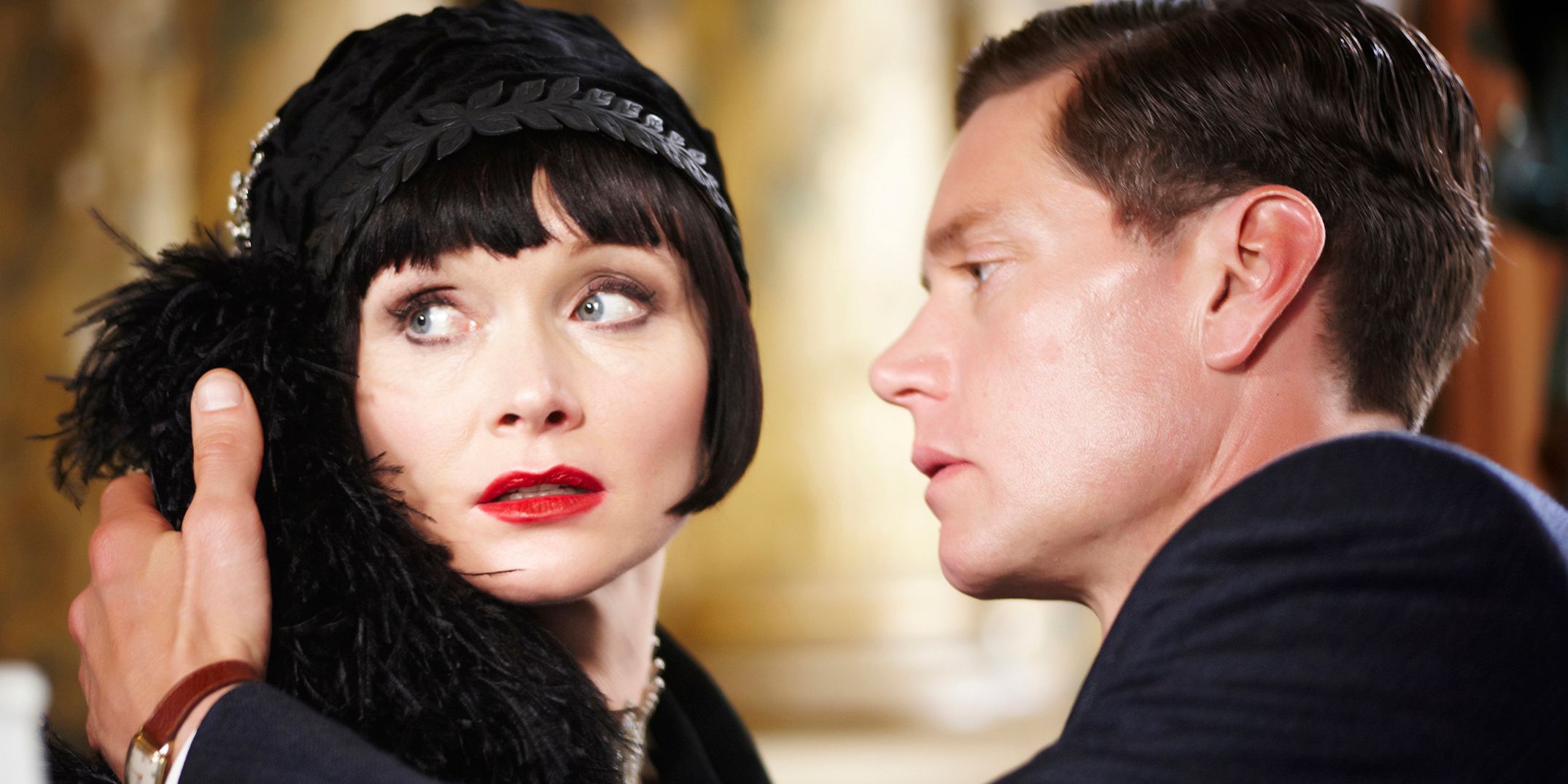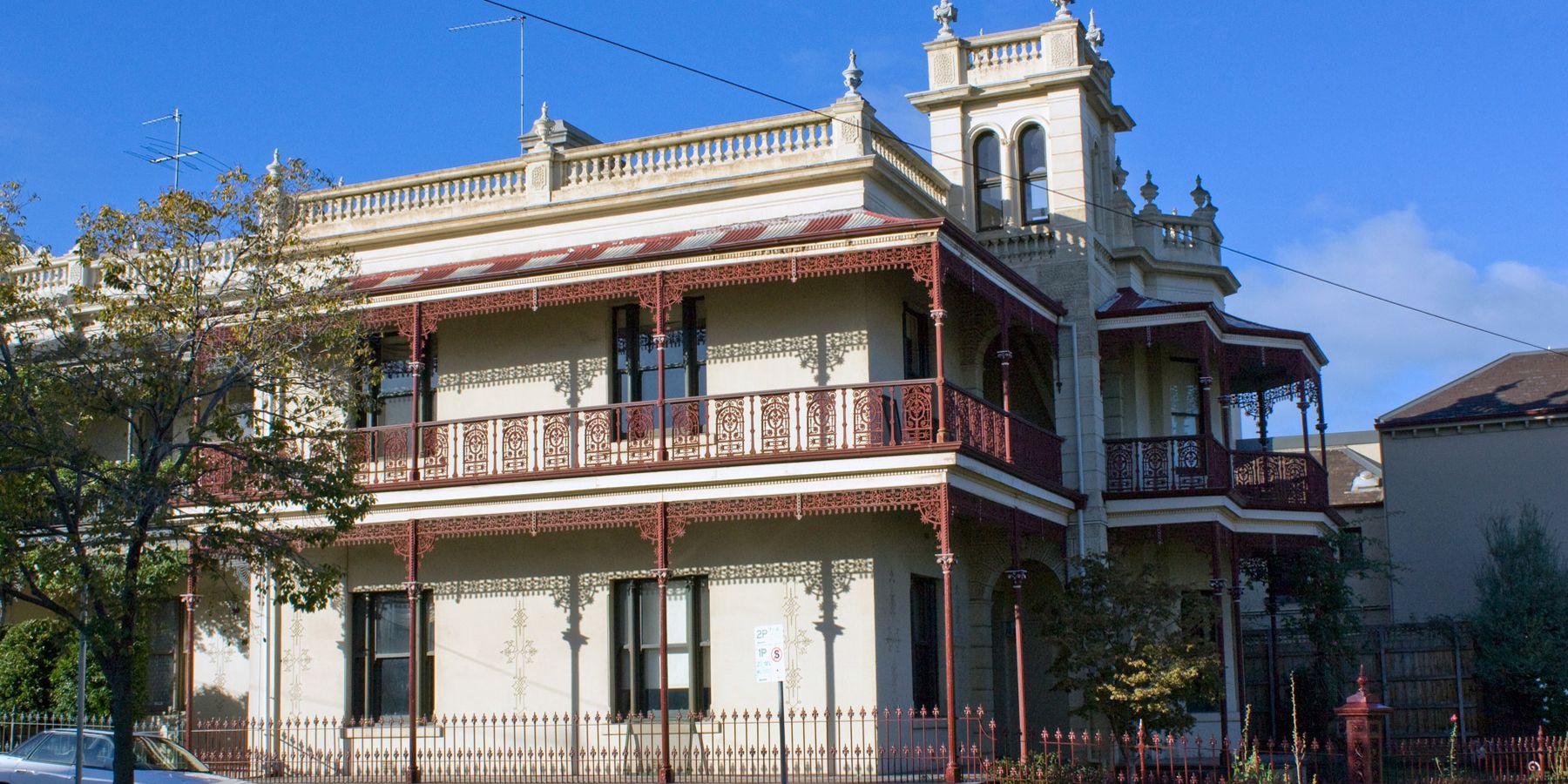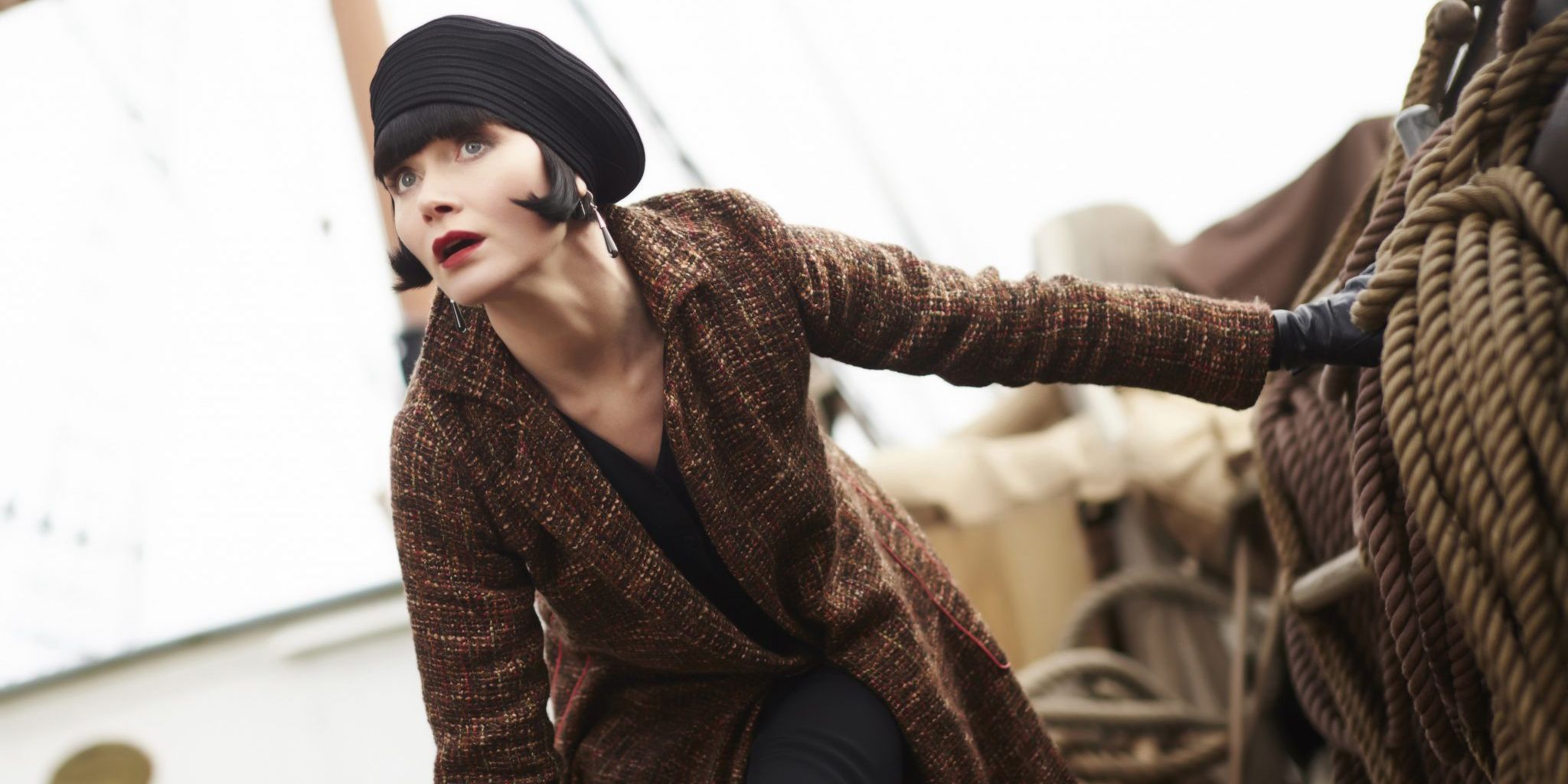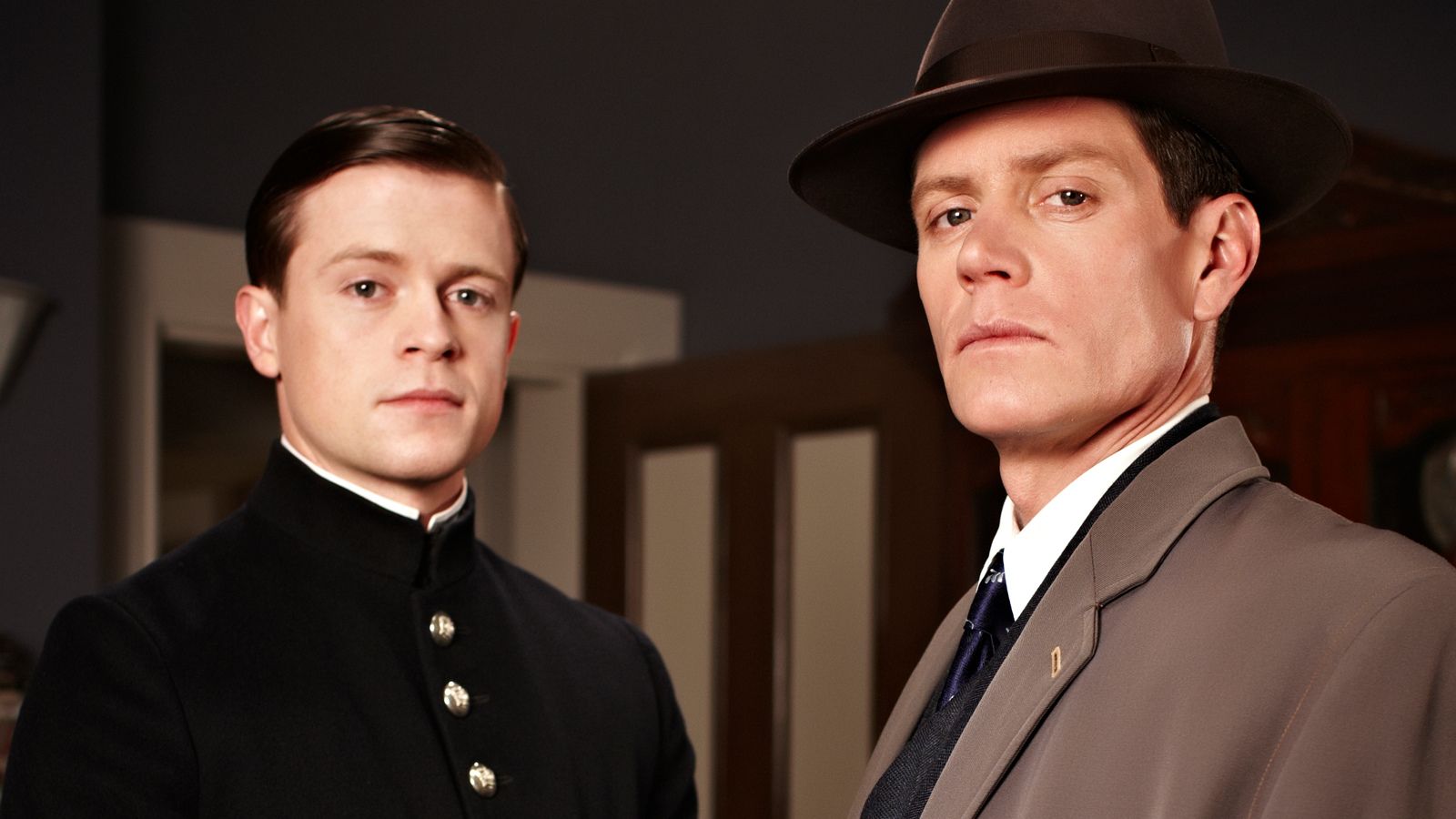Miss Fisher's Murder Mysteries captured the attention of crime enthusiasts and Netflix binge-watchers alike when it appeared on the streaming platform in the U.S. in 2014. First premiered in Australia in 2012, the 1920s, three-season show follows Miss Fisher, a "lady detective" in Melbourne, Australia who solves murders and looks fashionable to boot!
The series does its very best to stay true to the time period it's firmly set in, with the writers, costume designers, and set designers doing their fair share of research. But, as with any historical show, there are bound to be a few details that slip through the cracks. We'll go through those slip-ups—and the most accurate points—in the show below!
Inaccurate: Miss Fisher's Gold Revolver
Miss Fisher's gilded revolver is one of the most eye-catching parts of her look, and that's saying something. Every time she pulls it out on a case, the tension in the scene rises as we wait for the suspect to appear around the corner.
But, much to our dismay, this revolver isn't the most accurate prop in the show. The gun—a snub-nosed, J-Frame Smith and Wesson revolver—was actually first produced after World War II and introduced in 1950. Looks like Miss Fisher was far ahead of her time—especially since her gun is gold, too!
Accurate: The Costumes
The first things that catch any viewer's eye when they first tune into Miss Fisher's Murder Mysteries are the stunning costumes. Colorful, sometimes sparkling, and always fabulous, the outfits on this detective show certainly steal the stage!
That's not to say the writing and acting aren't just as brilliant, but we could stare for hours at Phryne's beautiful dresses or gush about Detective Inspector Jack Robinson's coats and suits for days on end. The costume designers certainly did their homework and made the best 1920s outfits they could!
Inaccurate: Miss Fisher's Costumes
Unfortunately, even though the show does an amazing job with the vast majority of the costumes, some of Miss Fisher's aren't exactly accurate. There's no denying that they're stunning, but some mix and match different eras of fashion, particularly periods that came after the 1920s.
The most glaring examples of this are when Phryne steps out in a pants suit. While she does look fabulous and totally comfortable, this style of loose pants with low waists was only made popular for women much later, most likely by the 1970s. The 1920s were known for being revolutionary in terms of fashion, though, so it's entirely possible that Miss Fisher is simply ahead of the times!
Accurate: The Swimsuits
Yet again diving into fashion—pun absolutely intended—the swimsuits that Detective Inspector Jack Robinson and Officer Hugh Collins wear are perfectly accurate for the 1920s. Men typically didn't go shirtless with swim trunks, as is the popular fashion nowadays. They instead wore tank tops over a pair of shorts that were usually cut to about mid-thigh.
In the third episode of season two, "Dead Man's Chest," Jack and Hugh are shown wearing remarkably similar swimsuits that follow the 1920s design to a T! Jack wears all black, while Hugh sports white with some fetching black accents.
Inaccurate: Paperback Books
This is a much smaller point to be made, but sometimes little details like this slip by, as we mentioned earlier. In the sixth episode of season one, "Ruddy Gore," Miss Fisher and Dot peruse a series of paperback books for information while conducting an investigation.
It's only a small portion of the episode, but as it turns out, this style of paperback book was only brought into wide, global release after 1935. It could be argued that the books they're looking at are older magazines, but it's difficult to truly tell how historically accurate these paperbacks are.
Accurate: The Murder Rate
One of the more grim aspects of any show that revolves around murder is the murder rate itself. There's at least one death every episode to start off the investigation, and sometimes that might seem like a lot, especially in the 1920s.
But surprisingly, Miss Fisher's Murder Mysteries has a pretty accurate murder rate in its first season. A study done by the BBC determined via 1920s Melbourne morgue reports and some careful calculations that the murder rate was the same: about three per month. The second and third seasons upped the ante a bit, but for the most part, the show stayed true to its history!
Inaccurate: Miss Fisher's Involvement
While the death toll is accurate for the time period and the setting in Miss Fisher's Murder Mysteries, Miss Fisher's involvement in all of those, well, murder mysteries isn't exactly accurate. There's an awful lot of murder that goes on in this city, as we've discovered, and for one detective to be involved in every case seems like a lot.
Not to mention the fact that Detective Robinson and Officer Collins are assigned to almost every single case, too! It's easy to suspend our disbelief on this point, but it does make us wonder; are there any murders Phryne doesn't know about?
Accurate: The Setting
There's nothing quite like it when a show almost literally transports you to a time and place you might have never experienced otherwise. Miss Fisher's Murder Mysteries does exactly that by dropping the viewer into a picture-perfect setting that captures the 1920s feel at every turn.
Whether it's Miss Fisher's lavish house, a grisly crime scene at the docks, or the small interior of the police department, this show does its best to look and feel historically authentic. The exterior of Miss Fisher's house is actually a real, historical location in Parkville, Melbourne called Wardlow, so feel free to drop by and snap a few pics!
Inaccurate: "Miss" Fisher
While this one's a bit trickier to determine, as language is a fickle beast, the usage of "Miss" wasn't exactly popularized in the 1920s. While the terms "Ms." and "Miss" were around as early as the 17th century, it was revived in the 20th century, most likely sometime in the 1960s.
What's interesting is that it originally had nothing to do with whether a woman was married or not. It was simply another way of addressing someone, like "Mr." or "Mister." It transformed over the course of the 19th century, though. Either way, Miss Fisher is certainly making waves, as she does best, and being addressed how she prefers!
Accurate: Detective Work
The best part of any detective show is, well, the detective work! And Miss Fisher's Murder Mysteries does a perfect job at showing exactly how each investigation unfolds, especially in an earlier era where they didn't have the advanced technology we have today.
Most of Miss Fisher's methods include good old-fashioned interviews, sneaking in—or out!—of crime scenes, stakeouts, and using her connections to gain access to information. It's always fun to watch Phryne figure out who the murderer is in this scaled-back fashion—and to try our own hands at figuring it out, too!

